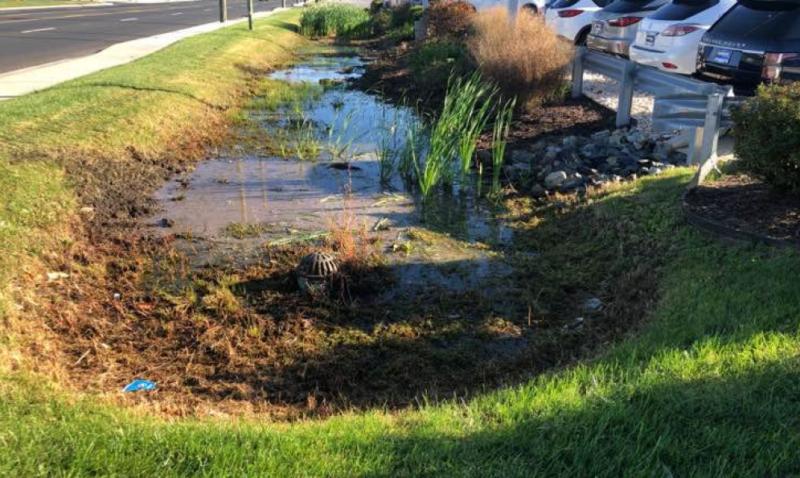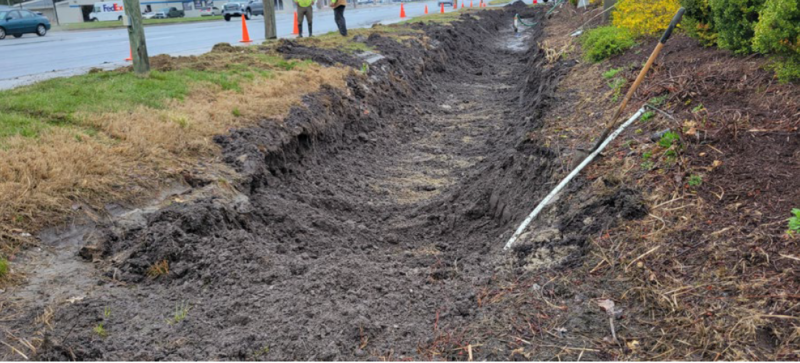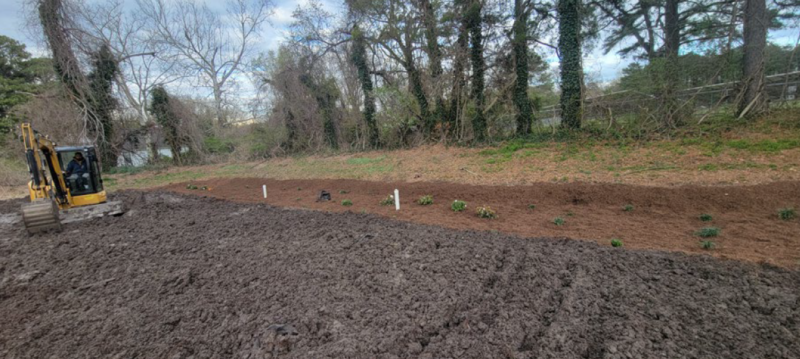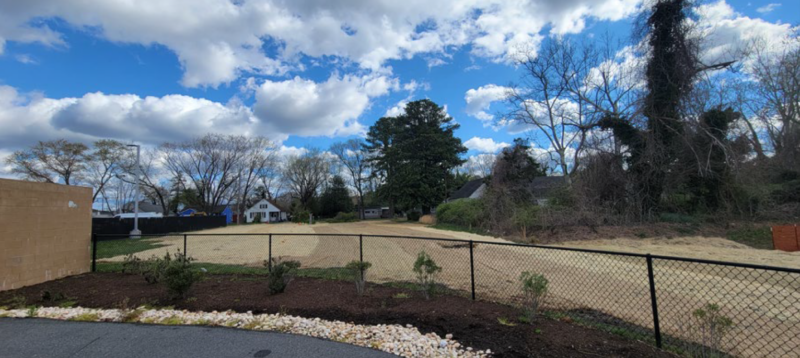Salisbury, Md. Bioretention Remediation
Salisbury, Md. |
Commercial |
Green Infrastructure
Overview:
Commercial property received Notice of Violation (NOV) requiring remediation of two bioretention cells on site.
Problem:
On properties with considerable impervious pavement, additional stormwater control measures (SCMs) or Best Management Practices (BMPs) are installed. This particular site has a large parking lot that limits stormwater and rainfall from returning to the ground. During construction and site planning, designers created and installed bioretention cells to encourage the stormwater to return to and recharge the ground. During a regular inspection, the City of Salisbury found the bio cells in disrepair and issued a Notice of Violation (NOV) to the property owner. The NOV included areas that required attention and steps for remediation as well as a deadline for completion.
The two bio cells on the property required complete replacement of bio media, sub aggregate, underdrains, reservoir stone and planting. These bio cells were intended to filter stormwater through aggregate (rocks, mulch and sand) and into the underdrain where the runoff would be sent to a storm sewer. Both cells had been neglected with overgrown vegetation and poor drainage. Properly functioning cells should fully drain within 72 hours except following major rain events.

Before

After
Solution:
To appropriately restore these cells, AQUALIS professionals had to understand the root cause of the flooding. The remediation process started with pumping out the standing water and removing all materials inside the cell. The majority of the material inside each cell was an accumulation of sediment which impeded the natural filtration. As all the material was removed, an engineer came on site to inspect existing structures. The second bio cell had an outfall control structure (OCS) which acts as a failsafe in the event stormwater overwhelms the cell. This is a concrete structure with an opening at a designated height to allow stormwater to flow directly into the storm sewer or another BMP without being treated to eliminate the possibility of flooding. For a property like this, that has considerable impervious surfaces, flooding can be common unless there are measures actively preventing it. The engineer inspected the OCS height and confirmed its ability to function properly once cleaned of material. This confirmation saved the project from escalating to the demolition and installation of a new OCS.
AQUALIS acted as a liaison between the client and the governing body, ensuring remediation plans were sufficient to resolve the NOV. Once all excess material was excavated from the site, the pipes leading to the underdrain could be cleaned. The bottom of the bio cells then had to be scarified to assist in filtration and vegetation growth. Then the geo-fabric and stones could be installed. As per site plans, perforated PVC was installed to tie into the OCS and assist in drainage. Followed by the installation of pea gravel and rip rap before the approved vegetation.
When remediating BMPs it is essential to follow the existing site map or stormwater pollution prevention plan (SWPPP). This plan was approved during construction and lists the function of all engineered assets on the property. All repairs or remediation of a site include restoring BMPs to intended design.
Vegetation and plantings inside each bioretention cell are outlined in the SWPPP. Plants are native to the region and picked to assist in the draining and filtering of stormwater. Based on the intention of the BMP, some plants are installed to encourage pollinators and local wildlife.
 Kenosha, Wis. Highway KR Regenerative Stormwater ConveyanceThe Root-Pike Watershed Initiative Network Kenosha County, and others worked with AQUALIS to design and implement an innovative solution for stormwater control along Highway KR.
Kenosha, Wis. Highway KR Regenerative Stormwater ConveyanceThe Root-Pike Watershed Initiative Network Kenosha County, and others worked with AQUALIS to design and implement an innovative solution for stormwater control along Highway KR. Durham, N.C. Sinkhole Leads to Stormwater System RehabilitationThe tenant on this property noticed a depression that opened to the ground below and notified the property owners.
Durham, N.C. Sinkhole Leads to Stormwater System RehabilitationThe tenant on this property noticed a depression that opened to the ground below and notified the property owners.











